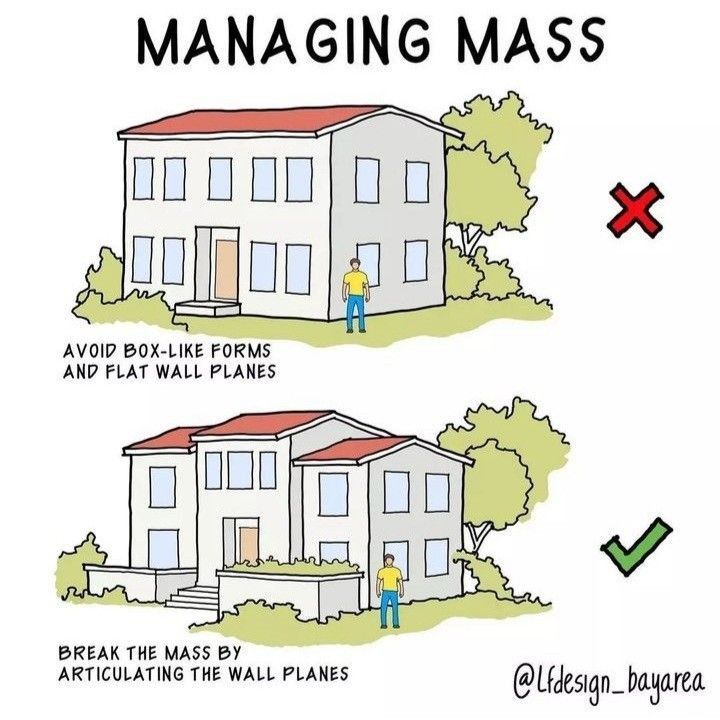How to make buildings look elegant, human-friendly, and well-proportioned
❌ The Wrong Way: Box-like Forms
- Flat wall planes and boxy forms make a building look bulky and monotonous.
- They lack depth, character, and scale, often feeling uninviting.
- From a design perspective, these structures can feel out of proportion with the human scale and surrounding environment.
- Big, uninterrupted surfaces also increase heat gain in hot climates and may cause structural monotony.
✅ The Right Way: Articulating Mass
Instead of a single flat block, break the building into smaller articulated planes. This can be done by:
- Stepping walls and facades → Adding projections and recesses to create depth.
- Varying rooflines → Using different heights and slopes for visual interest.
- Adding porches, balconies, or verandas → Enhances livability while softening the bulk.
- Integrating landscaping → Shrubs, trees, and green edges further blend the building into its environment.
🎨 Benefits of Breaking Mass
- Improves Aesthetics → Makes the building visually appealing, dynamic, and elegant.
- Human Scale → Residents and visitors feel more comfortable because the building relates better to human proportions.
- Shading & Climate Control → Projections and recesses create natural shading, reducing energy needs.
- Contextual Fit → The building harmonizes with its surroundings instead of dominating them.
🌟 Real-life Example
- Think of Mediterranean villas, craftsman homes, or traditional courtyard houses — they all use articulation, variety, and layers instead of flat box-like walls.
- Even in modern architecture, articulated planes are used to add rhythm and texture.
👉 In short: Good architecture avoids bulky boxes. Great architecture breaks the mass into human-friendly, climate-responsive, and visually rich forms.
